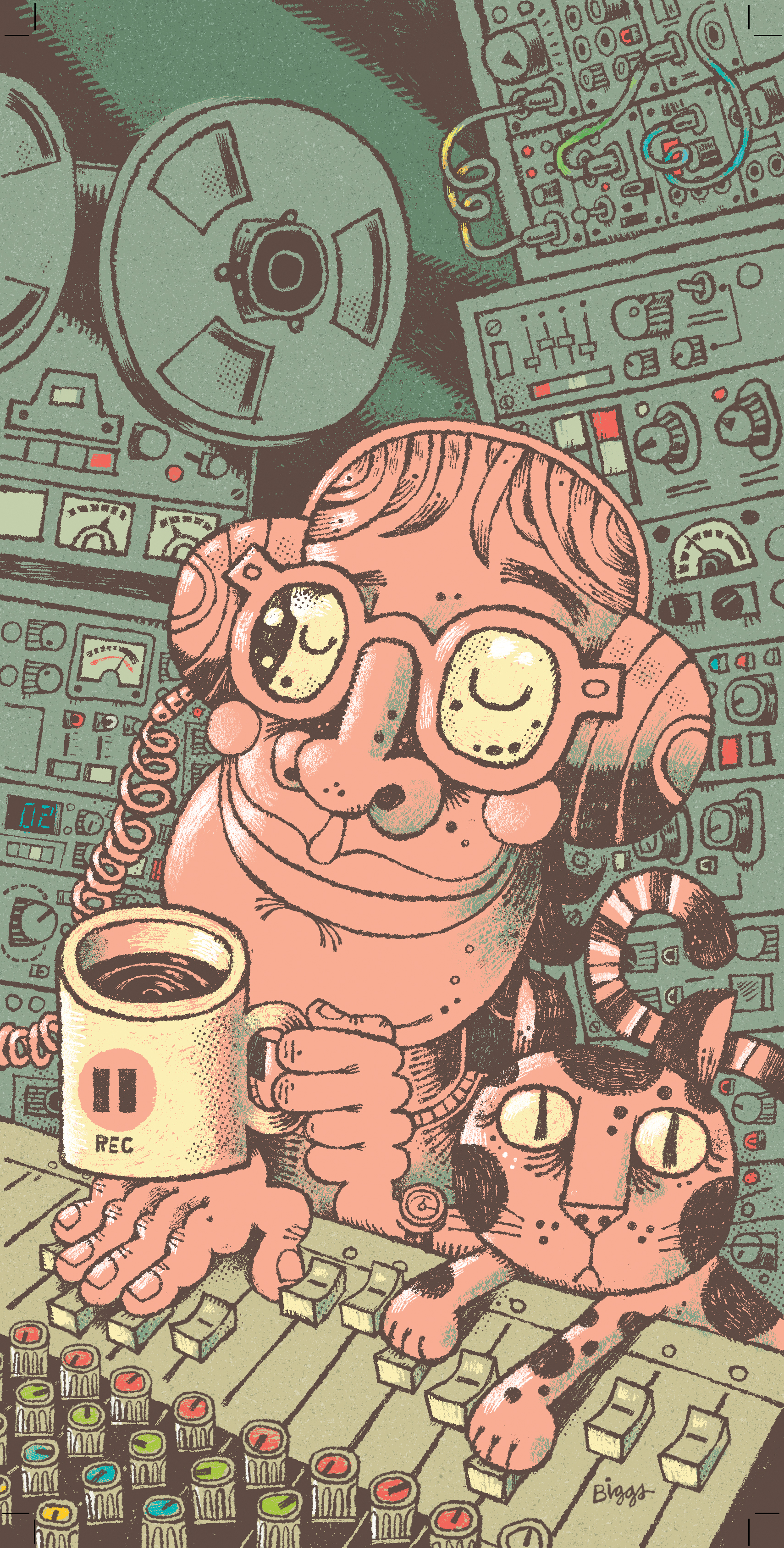Just as one must “settle in” to a new set of monitors, getting accustomed to new headphones can also be challenging. However, if you’ve ever sat down in an unfamiliar control room, in front of monitors you’ve never mixed/tracked with, and were able to say to yourself, “Everything sounds perfect. Let’s get to work!,” you’ll understand the sensation I got on first listen with Focal’s new Lensys Professional closed-back headphones through my MacBook Air’s consumer-grade headphone port.
For those familiar with Focal’s premium Clear Mg Professional [Tape Op #143] open-back ‘phones, you’ll notice the Lensys Professional incorporates a similar durable light metal-reinforced frame. Another (unseen) similarity between these two headphones is the use of small pyramid shapes on the inside of the earcup, which helps to break up standing waves and comb-filter effects coming from the back of the membrane. The swivel mechanism that flattens the drivers for easy storage (custom case included) is super solid and far less susceptible to wear or breakage than pretty much all 20 or so of the other headphones I had lying around. Also notable: The Lensys Pro is around a third of a pound lighter than the Clear Mg Pro (close in weight to my Audio Technica ATH-M50xs [#113]). However, like the Clear Mg Pros, the Lensys Pro incorporates Focal’s custom-designed (replaceable) earpads and headband made from thermosensitive memory foam that hugs your ears softly while seemingly repelling sweat. The lightweight and comfortable fit – especially over my eyeglasses – results in less fatigue during hours of audio work.
I didn’t feel the need to A/B the Lensys Professionals against my extensive collection of other headphones. Though I own a pair of high end open-backs, I knew from my initial listening experience that my closed-backs were doomed in comparison. Instead, I spent most of my time with Lensys Pros, revisiting mixes, reviewing my students' playlists, and listening to newer vinyl releases. I’ve come to understand that my first listen response (and continued comfort) with the Lensys Pros were likely due to their unique low end response. It turns out that the headphone’s 40 mm drivers are actually ported! While struggling to process this information, I held an earcup between my eyes and the sun, hoping to see these elusive ports; I’ll just have to trust that they are there. This design feature, along with their in-house manufactured aluminum-magnesium rigid “M”-shaped dome, must certainly explain the pleasing balance of audio playback. Additionally, the Lensys Pro’s low impedance (26 ohms) makes them easy to drive (portable devices and laptops match well), which I definitely appreciate.
When evaluating/reviewing listening tools, I have three previous songs in different genres that I like to remix from scratch to gain insight into product performance. While this “testing” is entirely subjective, I find it gives me insight into frequency, dynamic, and spatial choices that inform not only the technical aspects of what I may be hearing through a device but also the vibe it gives that inspires the final (is it ever really final?) remix. I struggle to get the 4 kHz on electric guitars mixed right, and adjusting de-essers (too much or too little) for vocals. The Focals were the first headphones I tried that felt useful (without being too overbearing) in the 4 to 10 kHz range. All three mixes referenced well in various loudspeakers, and the bass and kick drum sat just right. However, aside from the technical benefits, what I found stood out most about the Lensys Professionals was that they were fun as all hell to mix with. I don’t know if I “got there” quicker with the Focals, but I definitely had more fun doing it. It’s not an issue of trust – the Lensys Pros do inspire confidence – but more of an attitude of, “Let’s try this and see what happens!” In reinforcement of trust and confidence, the R&D on these headphones passed through the ears of many professional working studio engineers, resulting in voicing tweaks to the eventual production model. My overall impression was that my mixes with the Lensys Pros resulted in tracks that were more exciting to listen to than all the other headphone tests I can recall – isn’t that the point?
From another perspective: When musicians self-record, good headphones are a must. We often can’t really hear the nuances of what we’re recording until after playback; there’s no separate engineer to ensure that we capture the sound accurately or choose the best mic placement. The bonus of a closed-back headphone design is good isolation during tracking. Because the Lensys Professionals are accurate, fun to listen to, and so comfortable to wear, I had a blast recording myself on acoustic guitar, and my vocal overdubs were way more inspired. In addition to the custom-molded case, you get a four-foot straight cable, a ten-foot coiled cable, and the obligatory 1/8-inch to 1/4-inch jack adapter. Bonus: These are standard fit cables, so you don’t have to buy custom replacements from the manufacturer.
It’s particularly difficult for me to shift from “audio nerd” to “music lover” mode, but the Lensys Professionals go a long way to bridge that gap. Yes, I’m a bit of a Focal fanboy: They make their own components and constantly innovate to improve the listening experience. But, if you’re still searching for your perfect headphones, take into account accuracy and comfort, and don’t forget about the vibe; the Lensys Pros have all three.




_disp_horizontal_bw.jpg)